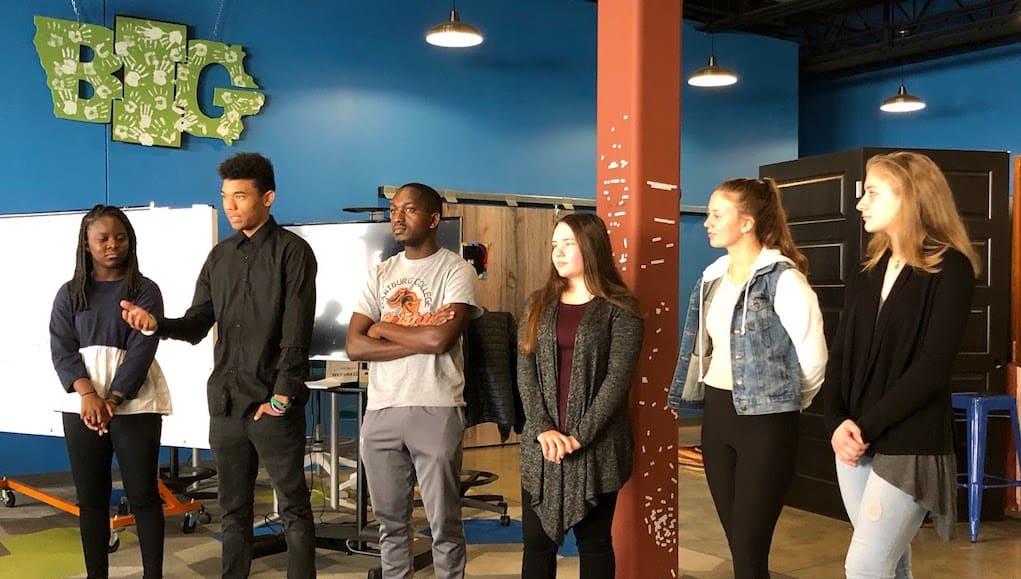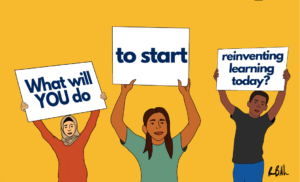Making a BIG Difference: Unleashing Talent, Inspiring Innovators

In June 2008, much of eastern Iowa was under water. The Cedar River covered 10 square miles of Cedar Rapids and destroyed much of downtown. As part of the rebuilding process, the local newspaper publisher commissioned Trace Pickering to lead a community conversation about what young people should know and be able to do.
Pickering gathered a small army of representatives from every part of the community. In each conversation, the basic themes were the same: kids are bored, teachers are working hard to connect and make things interesting. But splintering the courses into discrete subjects made the learning boring and the teaching hard.
The group developed a vision for learning experiences based on three themes:
- Passion: Start by tapping into a student’s interests and use that as a powerful learning tool.
- Projects: Engage kids in solving real-world problems and seeing how content actually lives in the real world.
- Community: Network kids into the community to see all of the great people and wonderful opportunities that exist.
After a few experiments, two school districts helped launch Iowa BIG (@IowaBIG) in 2012. Students from partner high schools come for a half-day program where students learn core academics and 21st century skills through authentic projects connected to community partners.
In the last three years, two more districts have joined, and a second location was opened. Iowa BIG now serves 250 students.
Projects That Matter
“The last thing we worry about is standards alignment,” said Pickering. The first goal at BIG is unleashing potential. “Upfront, we worry more about passion.”
Two staff members work with community partners to identify projects. Students can choose from this pool of opportunities, or opt to launch their own projects.
Teachers help students pack project plans with valuable learning around Iowa’s power standards. English teacher Nate Pruett said it’s pretty easy to incorporate reading, writing, and speaking opportunities into any community-connected project.
Project teams (of about five students) use agile methodology to push for quality outcomes.
On working in teams, student Mercy (center in featured image) said, “We hold each other accountable.”
But sometimes projects fail. That may be hard for ‘A’ students who are always used to getting the right answer. At BIG, “A failed project results in deep and successful learning,” said Pickering.
Teachers hold weekly small group seminars to work on important concepts not incorporated into projects.
Putting Passion to Work
After working in business for eight years, Nikki Wilcox taught in a traditional high school but realized “we’re not teaching them to be real-life adults.” As a BIG business teacher, she wants her students to leave “with a deeper knowledge of what their passions are and what they want their next chapter to look like.”
Pruett helps his students explore and embrace their passions, connecting those passions with innovative people in the community. While his students work on their writing, Pruett “hopes to help students discover things about themselves and their community, while creating a clearer vision of their current and future possibilities.”
BIG staff members meet daily over lunch to discuss student progress. They also meet with individual students on a regular basis to discuss passions and progress. Project teams hold retrospective meetings where they discuss what they learned, not unlike the kind of ‘post mortem’ debriefs they might encounter in the world of work.
Students take a bus, taxi or personal car to BIG. Pickering and his leadership team try not to let transportation be a barrier.
BIG staff translate project work into traditional courses and grades so that it can be incorporated into the home high school transcript.
In 2017, BIG was selected to receive an XQ Superschool grant. The organization has been impressed with the “transformational learning system that connects young people more deeply to their own community and opens up rigorous, real-world learning for students across the city.
The result: a community that sees “young people as assets, and young people see themselves as meaningful contributors to the community.”
For more, see:
- Learning to Make a Difference at One Stone
- Five Learner-Centered Opportunities in Oakland
- Why You Need ‘The Blender’ to Engage Your Students
Stay in-the-know with innovations in learning by signing up for the weekly Smart Update.
This post includes mentions of a Getting Smart partner. For a full list of partners, affiliate organizations and all other disclosures, please see our Partner page.
This blog was originally published on Forbes.







Patti Shade
Very inspirational to see this level of change in “how we do school”. #CreativityandInnovationSkills #21stCenturyLearning #CreativeAgentsofChange